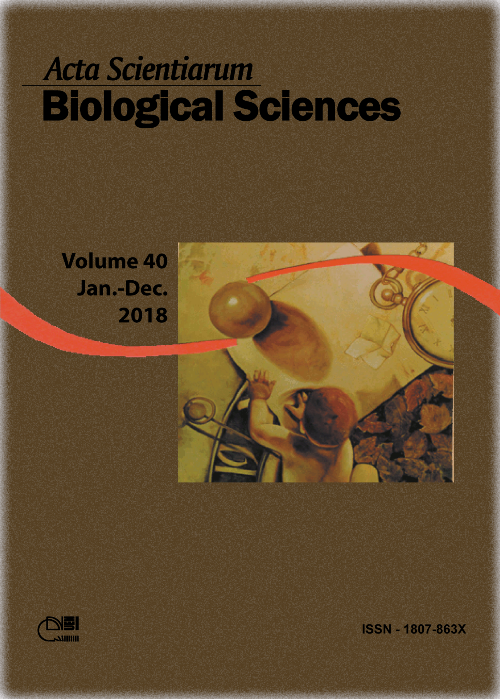<b>Extraction, physical-chemical characterization and <i>in vitro</i> inhibitory potential of thrombin generation of crude sulfated polysaccharides from Brazilian tropical seaweeds
Resumo
The biotechnological value of macroalgae for screening assays of thrombin generation-TG using sulfated polysaccharides-SPs as substitutes to heparin has been poorly explored. Five Brazilian species of macroalgae (Gracilaria birdiae, Acanthophora muscoides, Halymenia sp., Caulerpa cupressoides and C. racemosa) were analyzed and compared for their abundance, physical-chemical characteristics and in vitro anticoagulant assays of activated partial thromboplastin time-APTT, prothrombin time-PT and TG. Papain extraction yielded (p < 0.001) from 0.66±0.03% (C. racemosa) to 41.60±1.10% (Halymenia sp.) of crude SPs varying sulfate (8.41-42.60%) and total sugars (47.80-70.53%). Crude SPs showed difference in mobility and resolution pattern by agarose electrophoresis, while polyacrylamide analysis revealed SPs of > 100 kDa. These procedures, combined with the use of Stains-All, also indicated nonSPs. APTTs ranged from 2.81 (A. muscoides) to 21.30 IU (Halymenia sp.) vs. heparin (193 IU), and were dependent on sulfation of the crude SPs. PT was not altered. With respect to TG assay, crude SPs modified concentration-dependent and independently from molecular mass TG by both intrinsic/extrinsic pathways in 60-fold diluted human plasma, with total intrinsic inactivation using crude SPs from A. muscoides in parallel to heparin (p < 0.05). Thrombosis in vitro is differentially modulated by distinct crude SPs from Brazilian seaweeds.
Downloads
DECLARAÇÃO DE ORIGINALIDADE E DIREITOS AUTORAIS
Declaro que o presente artigo é original, não tendo sido submetido à publicação em qualquer outro periódico nacional ou internacional, quer seja em parte ou em sua totalidade.
Os direitos autorais pertencem exclusivamente aos autores. Os direitos de licenciamento utilizados pelo periódico é a licença Creative Commons Attribution 4.0 (CC BY 4.0): são permitidos o compartilhamento (cópia e distribuição do material em qualqer meio ou formato) e adaptação (remix, transformação e criação de material a partir do conteúdo assim licenciado para quaisquer fins, inclusive comerciais.
Recomenda-se a leitura desse link para maiores informações sobre o tema: fornecimento de créditos e referências de forma correta, entre outros detalhes cruciais para uso adequado do material licenciado.












1.png)




3.png)













